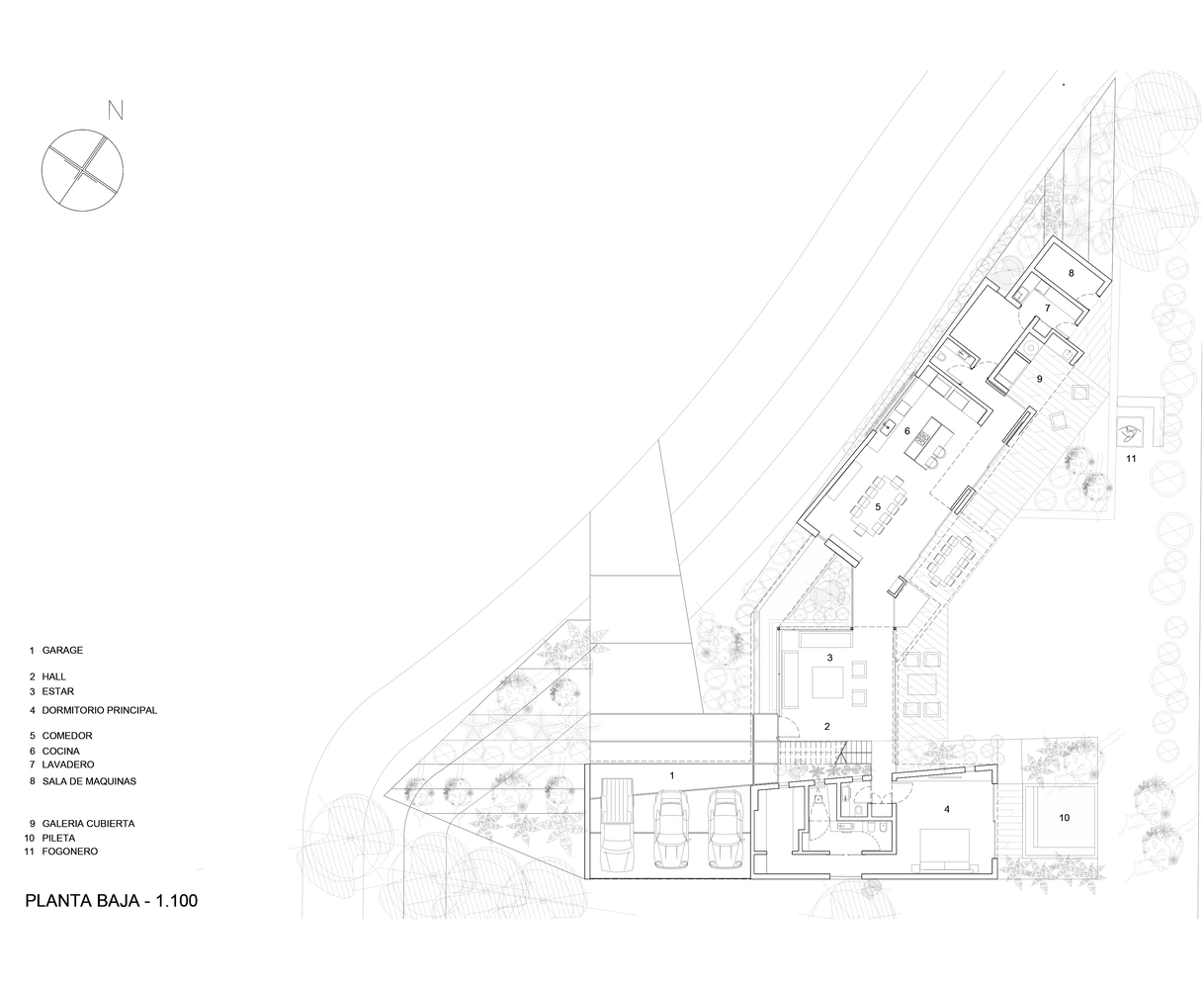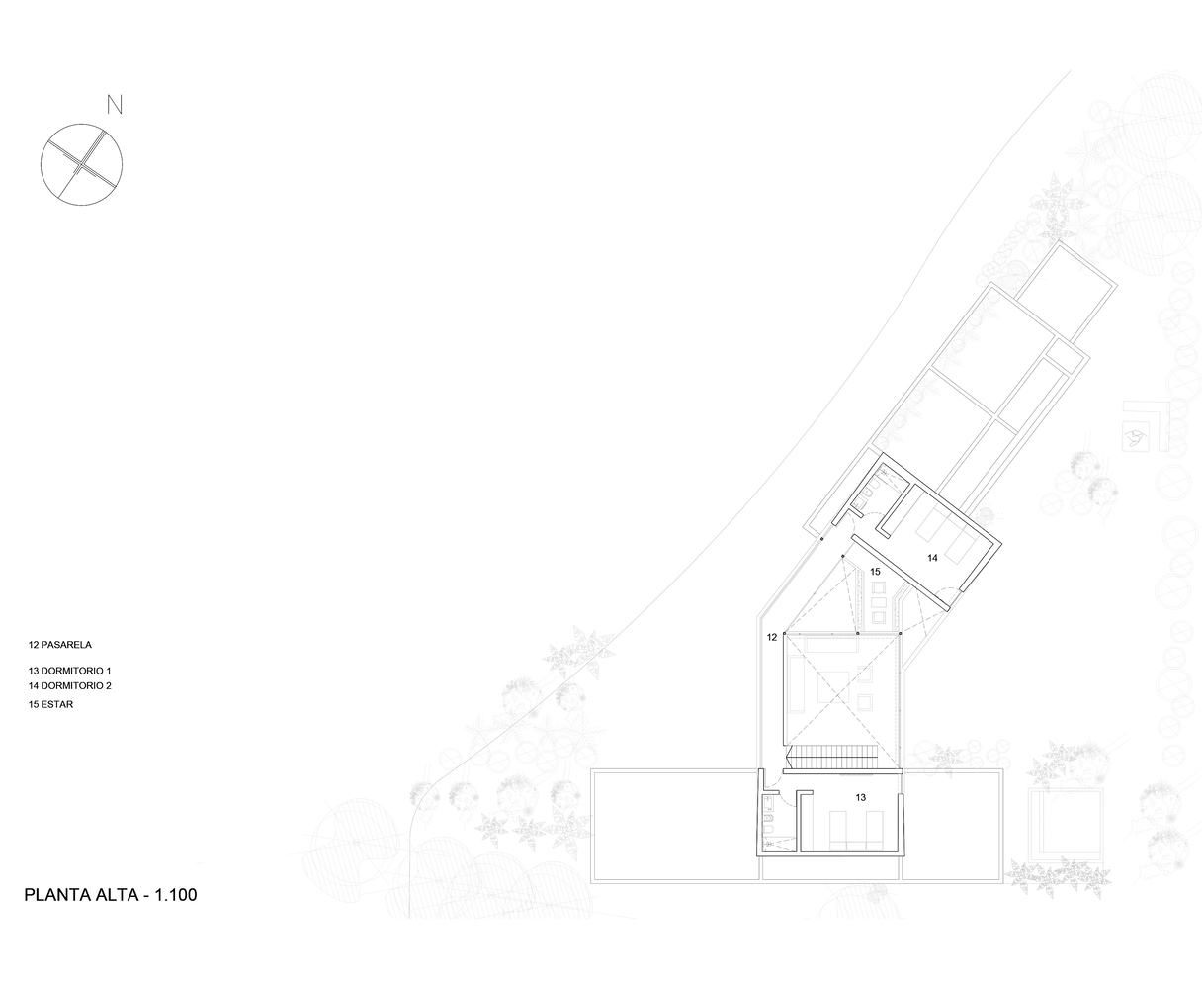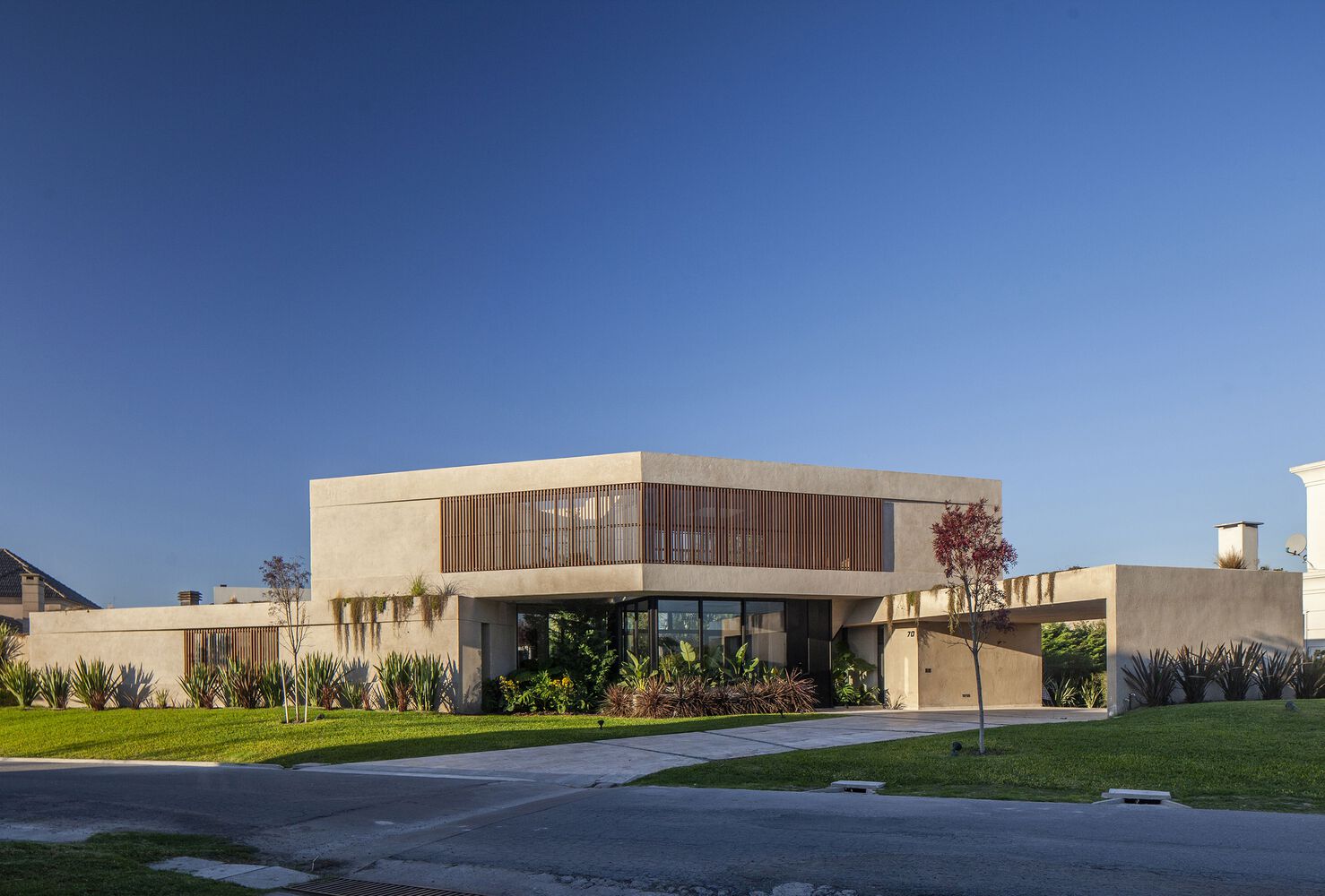Cacho House / Estudio Grizzo Arquitectos
- Curated by Benjamin Zapic
GUILLERMO ENRIQUE HUDSON, ARGENTINA
- Architects: Grizzo Studio, Santiago Fernández Bender
- Area: 420 m²
- Year: 2022
- Photographs:Alejandro Peral
- Manufacturers: Carlú, Deca, EB Mobile Design, Herrería Vicente, Marmolería Bustamante, Perricone, Thol
Text description provided by the architects. The design of this house posed a particular challenge: to distribute, at the request of the clients, a large program on the ground floor of a triangular lot that, despite its extensive front, did not offer a large rear space. To optimize the garden, it was decided to implant the ground floor in two separate bars: one against the front with the common areas and services such as dining room, gallery, kitchen, grill, machinery room, and laundry, and the other, located against the side setback for the rest area, where the master bedroom with ensuite bathroom and dressing room are located.






On top of these bars, a third one is supported, which, with its sunshade-covered windows, gives a compact appearance to the whole. In this third bar, two guest rooms are located at the ends, and in the space generated by the intersection of the three bars, the impressive double-height living room, the heart of the project, is created.



This space has the particularity of having a relationship with the surrounding vegetation on all four sides, thanks to the front gardens, back garden, internal patio, and planter generated under the staircase on its sides. At the back of the house, the upper floor bar is displaced over the ground floor bar, thus creating a gallery with a four-meter cantilever that does not touch the garden.



For the materiality of the entire project, travertine was chosen, which is used both on the floors throughout the house and on the bathroom coverings. For the exterior, a combed coating with marble and stones of the same material was used. These materials not only provide a timeless aesthetic but also require low maintenance and will age in harmony with the project.

As for the color palette, a raw tone was chosen, which is used on the walls, ceilings, and kitchen furniture, maintaining a monochrome that allows the vegetation and natural wood details, such as the oak kitchen furniture handles, to stand out and add warmth to the project.

Landscaping plays a fundamental role in the design, creating islands of vegetation in each of the cutouts generated by the movements of the architecture. In addition, planters with vegetation were placed on all roofs, which hang over the shadow play, thus generating diagonal dislocations between the beams and within each bar.



With this careful selection of materials, spatial distribution, and attention to landscaping, the project combines functionality, warm spatiality, and a strong connection with the natural surroundings.





